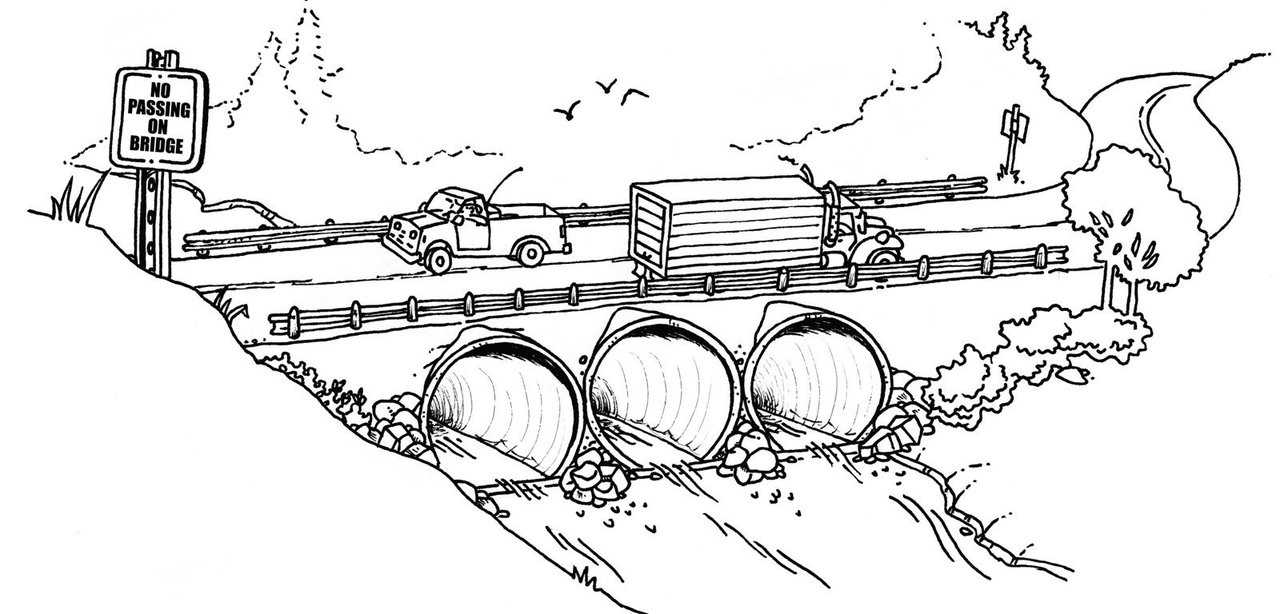Different Technology: Better Product
Monolithic® Bridge technology represents an innovative solution that allows bridge construction to be stronger, longer lasting and more affordable.
Historically, most bridges have been the domain of the standard, rectangular, steel or wooden form of construction. Unfortunately, these bridges have not withstood the test of time. Consequently, city and county governments are seeking affordable, yet permanent solutions for rebuilding these bridges using concrete.
A Monolithic Bridge is just such a solution. It would be difficult for a concrete Monolithic Bridge to wash out, burn away or buckle under pressure.
Same Technology: Additional Product
Monolithic Bridge technology involves inflating a balloon-shaped, tubular, fabric form called an Airform®.
Besides bridges, this same Airform technology works extremely well for the construction of cut-and-cover tunnels. Simply described, the technology involves pouring a steel-reinforced concrete slab floor, attaching an Airform to the floor, inflating that Airform and applying steel-reinforced shotcrete to the Airform’s inflated interior.
Advantages of Monolithic Tunnels and Bridges
Just the speed with which an Airformed, Monolithic Cut-and-Cover Tunnel can be built saves both construction time and serious money.
In addition and more importantly, enormous savings can be gained by using a round or curved concrete tunnel rather than a rectangular shaft. In general, a curved tunnel requires about half of the rebar and concrete that’s used in a rectangular tunnel of a similar size. That usually results in a savings of 30% to 35%.
Similar savings can be realized with Monolithic Bridges.
Typically, Monolithic Bridges are 10 to 30 feet wide, 8 to 10 feet tall, of any length and for a variety of uses. Primarily, they are used for safely routing auto and pedestrian traffic across waterways.
Whether the need is to keep traffic moving, keep water flowing or simply to create a passageway, Monolithic concrete bridges and cut-and-cover tunnels offer an ideal solution. Compared to traditionally constructed bridges and tunnels, we know that ones made of concrete last far longer than those made of wood and/or steel.
NOTE: Generally, Monolithic Bridges are constructed to meet the building code for highways and bridges as written by AASHTO (American Association of State Highway and Transportation Officials). The heaviest loading for a short-span bridge is designated as HS 20-44. The AASHTO code showing this loading is included (Figure A).
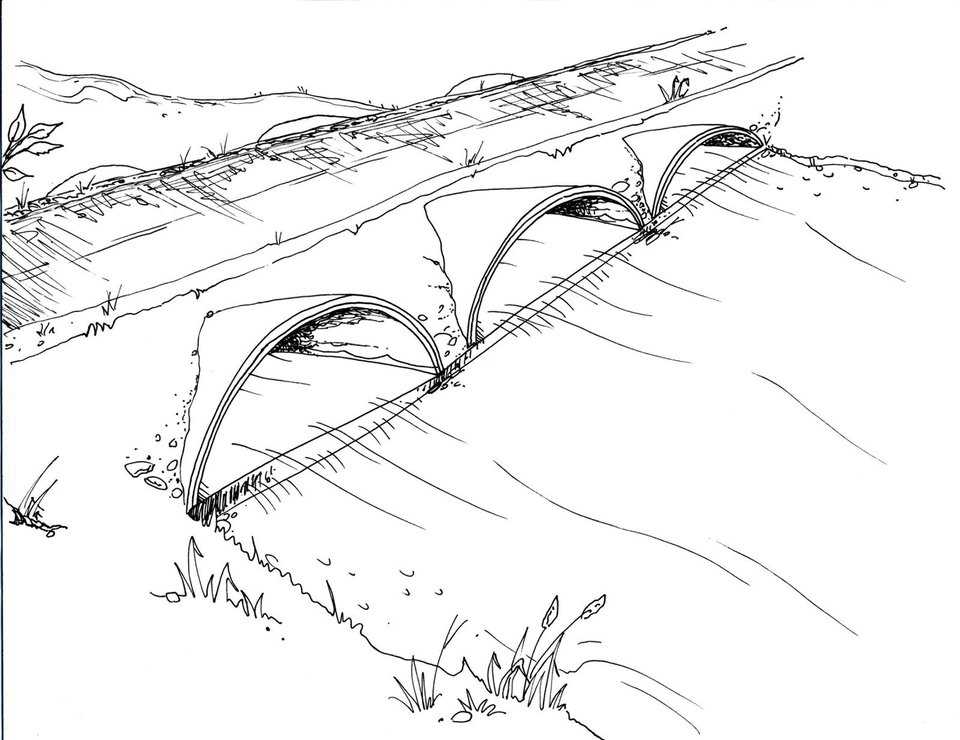
Each bridge section can be wide or narrow. They can actually move more water if they are spread apart as shown. (Barry Byers)
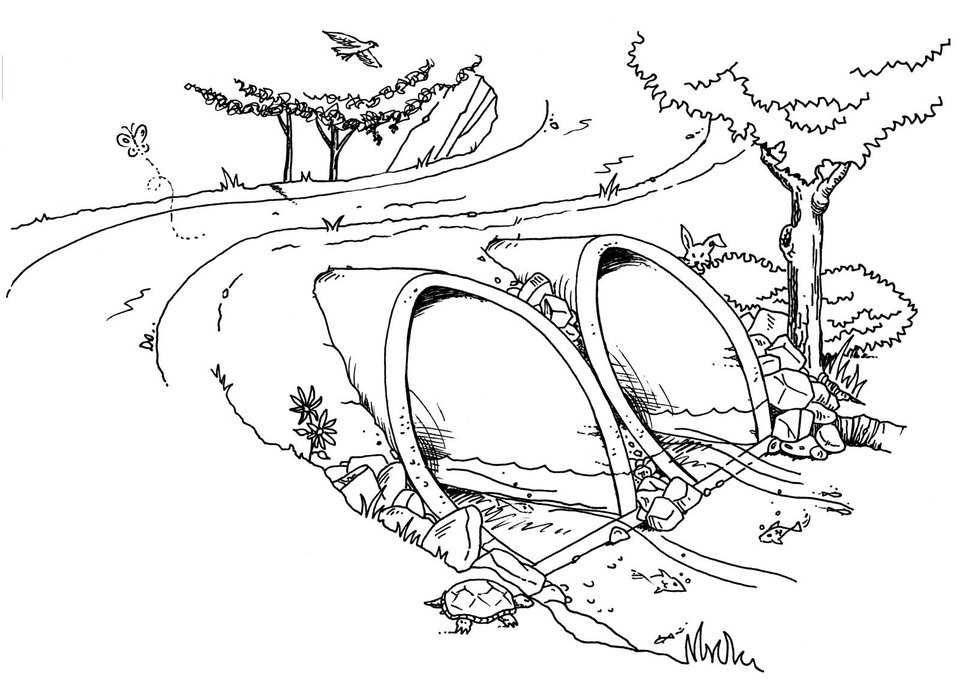
Monolithic Bridges are a safe, long-term solution. Virtually indestructible, these concrete bridges won’t burn, or buckle, and the concrete will last longer than anything made of wood or steel. (Barry Byers)
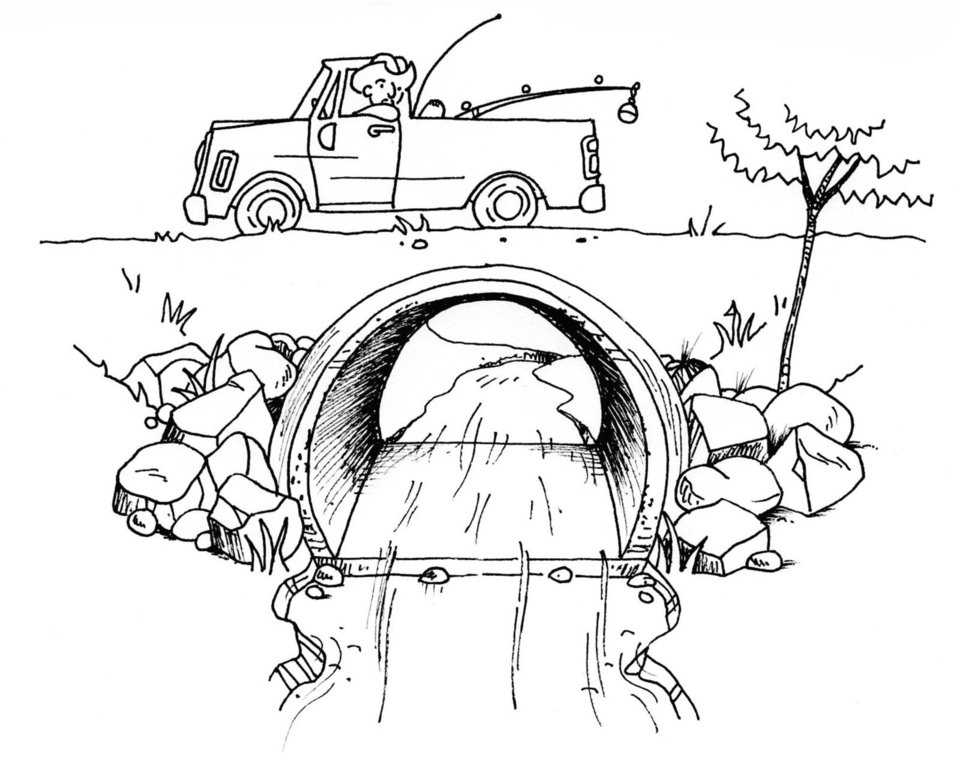
As an option sloped ends fit the contour of most rural roads. Maintenance is relatively simple by use of rip rap. Generally the tunnel can be cleaned out at low water by using a skid steer. (Barry Byers)
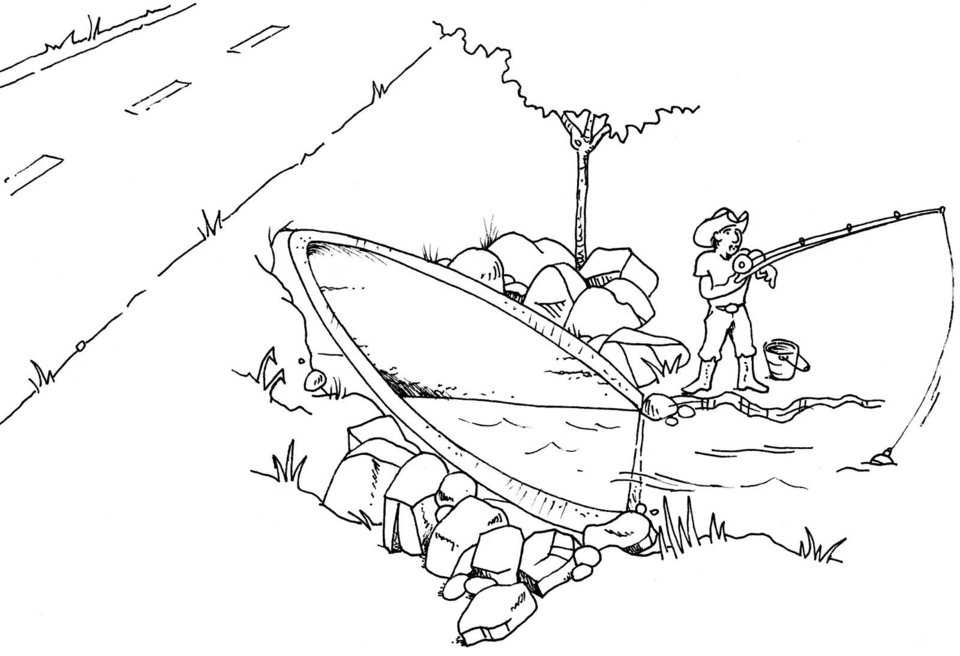
Note how well the sloped end Monolithic Bridges fit into the topography of the roadway. The simplicity is a huge factor in the affordability and versatility of the Bridges. They are fast to install. They will take enormous abuse as well. (Barry Byers)
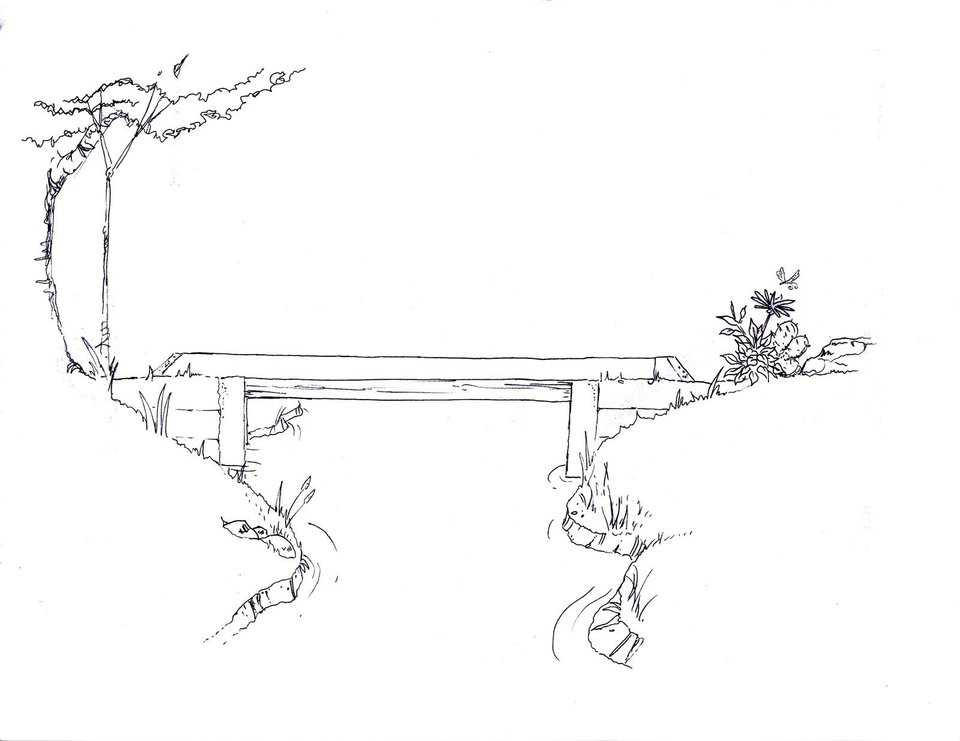
This type of bridge is a candidate for replacement by the Monolithic Bridge. (Barry Byers)
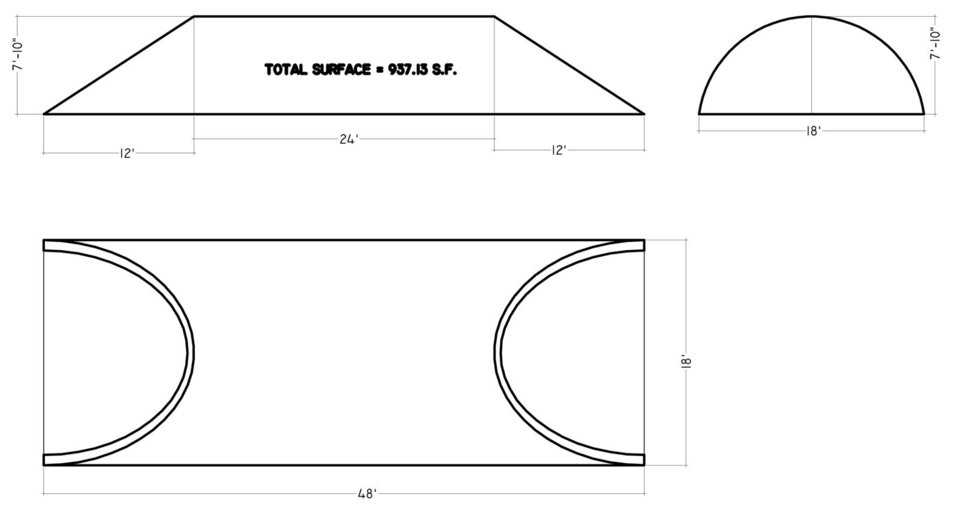
This simple sketch shows one of an infinite number of profiles. The Monolithic Bridge can be of any length and a wide variety of heights and widths. The sloped ends can also be varied or left off. (Barry Byers)
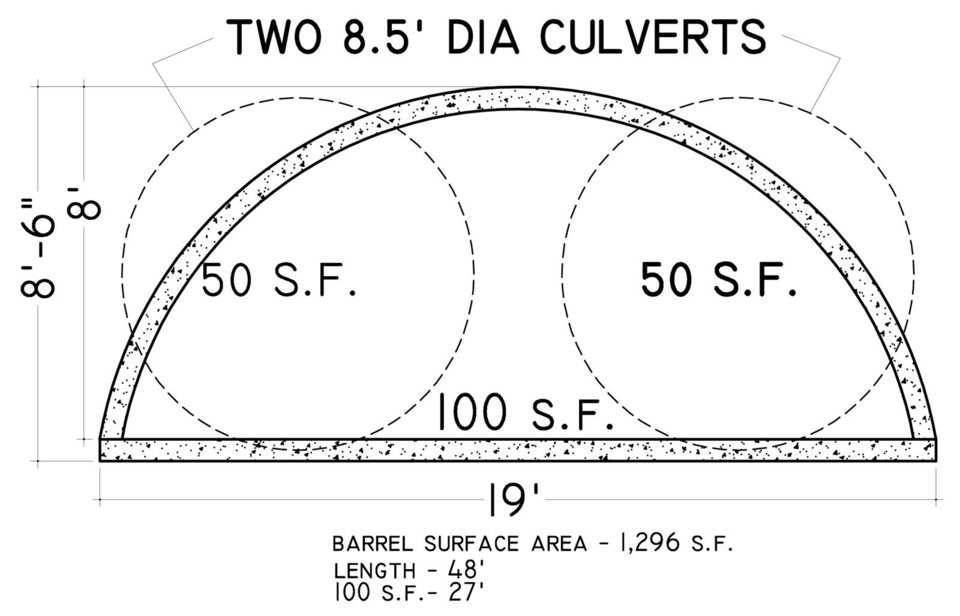
Compare the two 8.5 foot diameter metal culverts with a Monolithic Bridge section. The two will carry about the same amount of water. The bridge will last eons longer, carry more load, and allow more trash to pass. And the bridge with sloped ends is far easier to maintain and will generally be less costly. (Barry Byers)
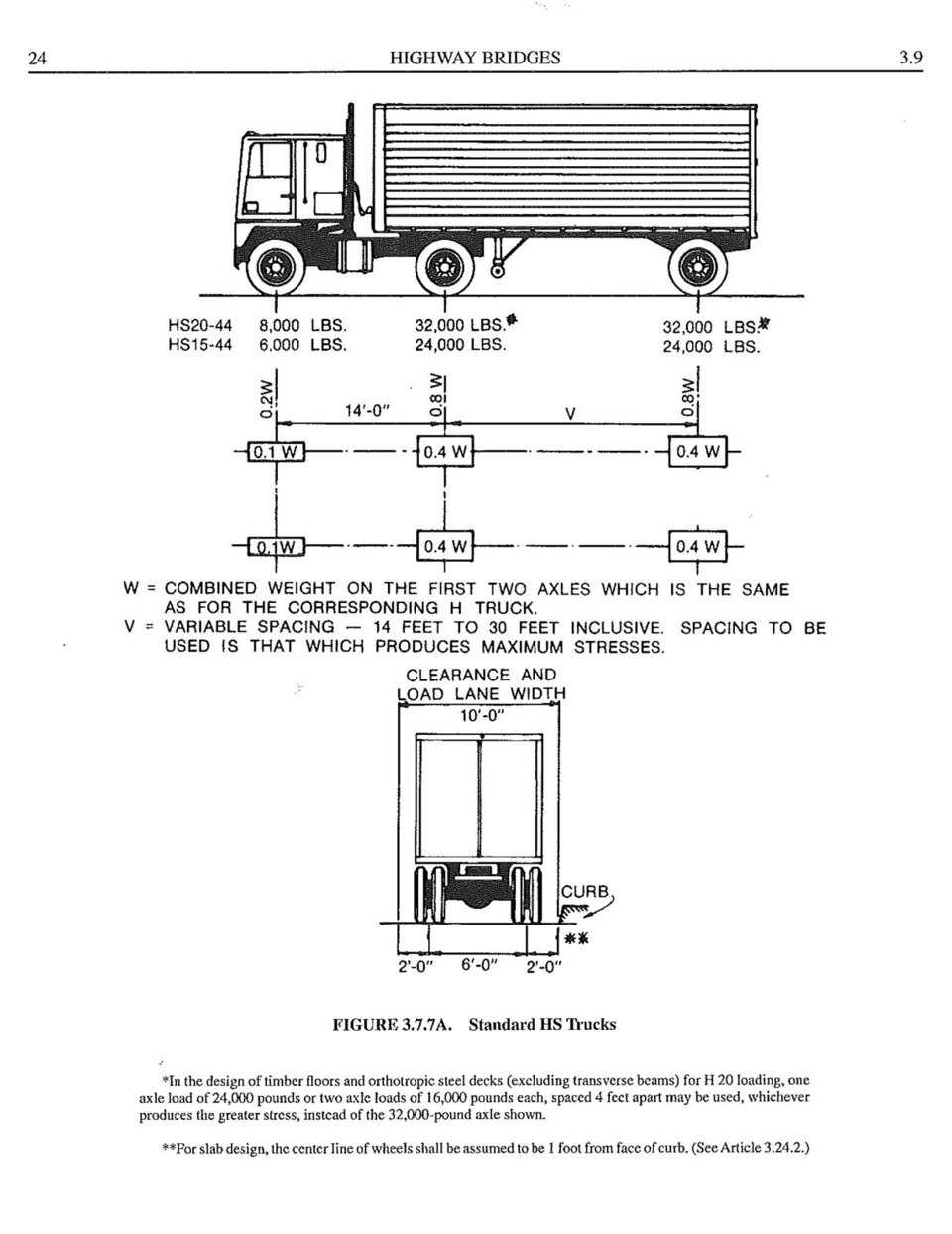
Figure A — Generally, Monolithic Bridges are constructed to meet the building code for highways and bridges as written by AASHTO (American Association of State Highway and Transportation Officials). The heaviest loading for a short-span bridge is designated as HS 20-44. The AASHTO code showing this loading is included. (AASHTO)
